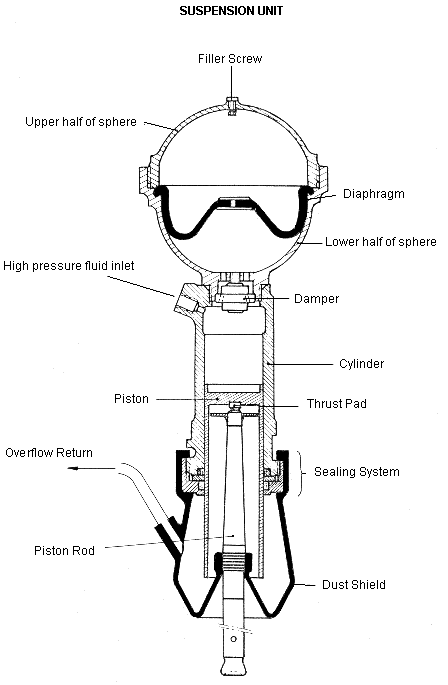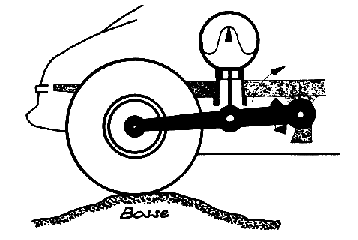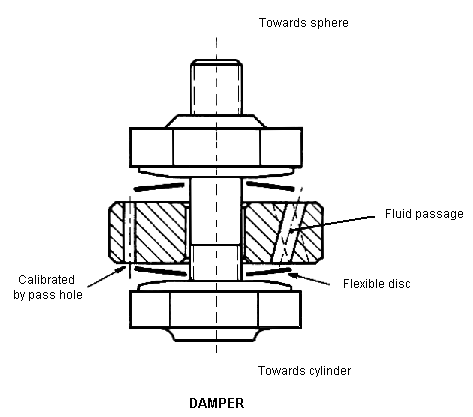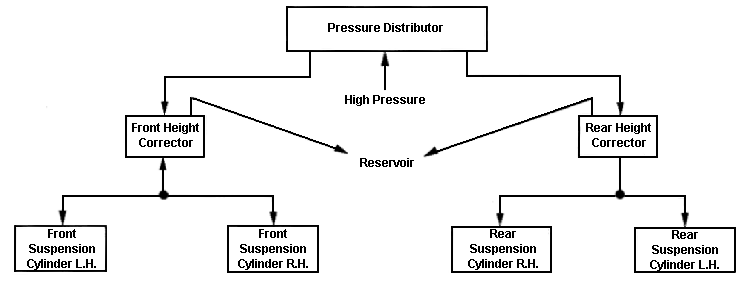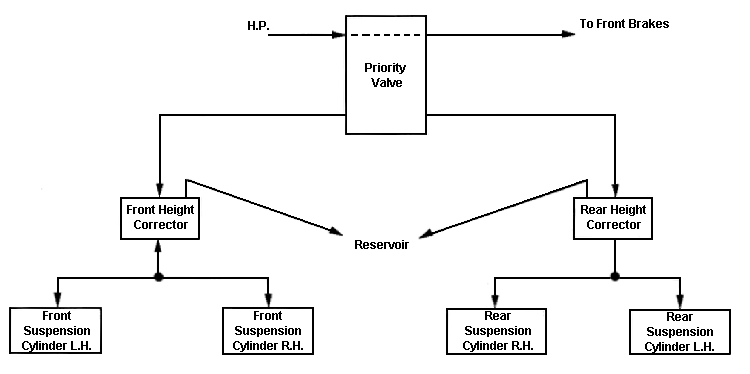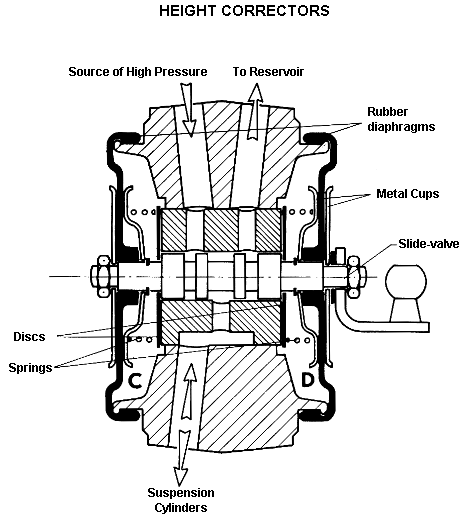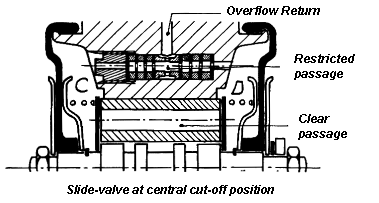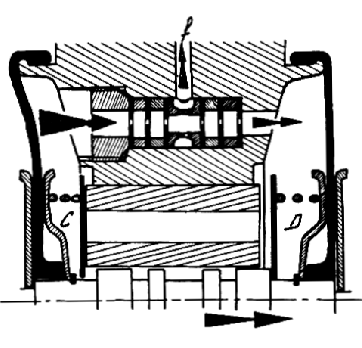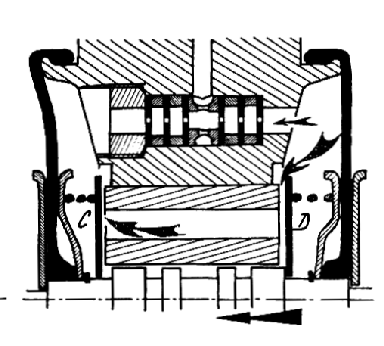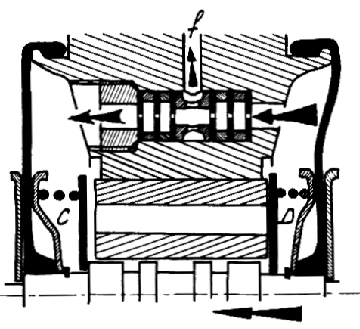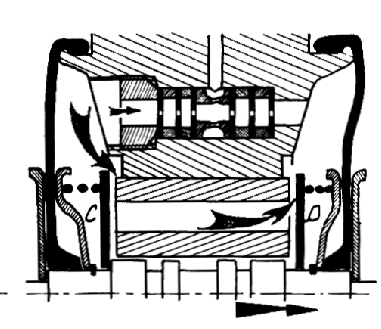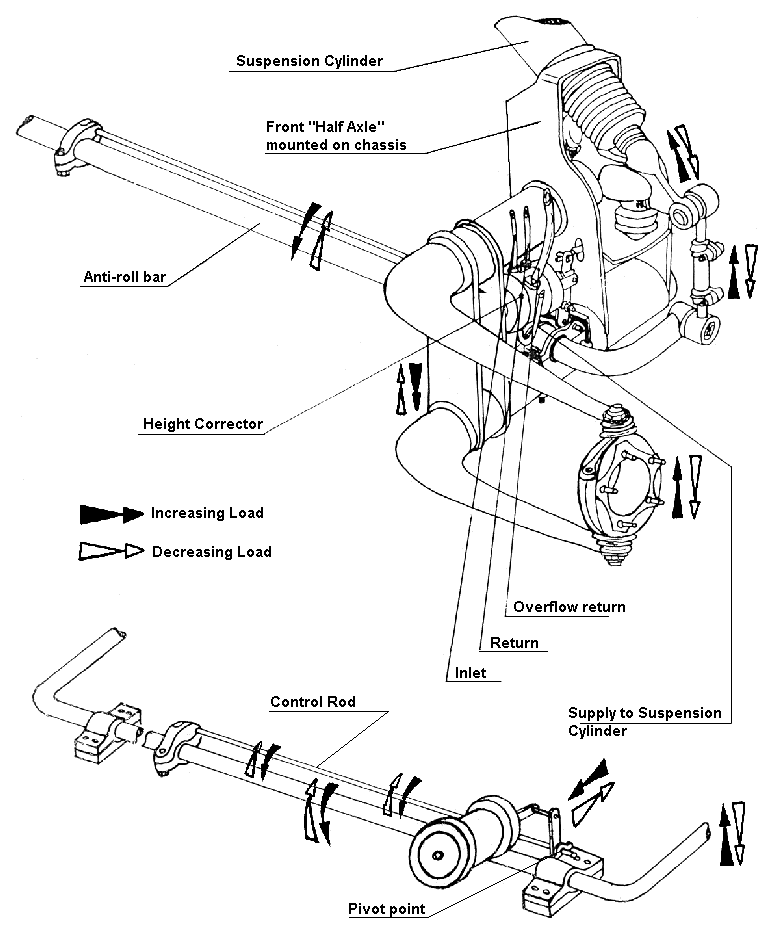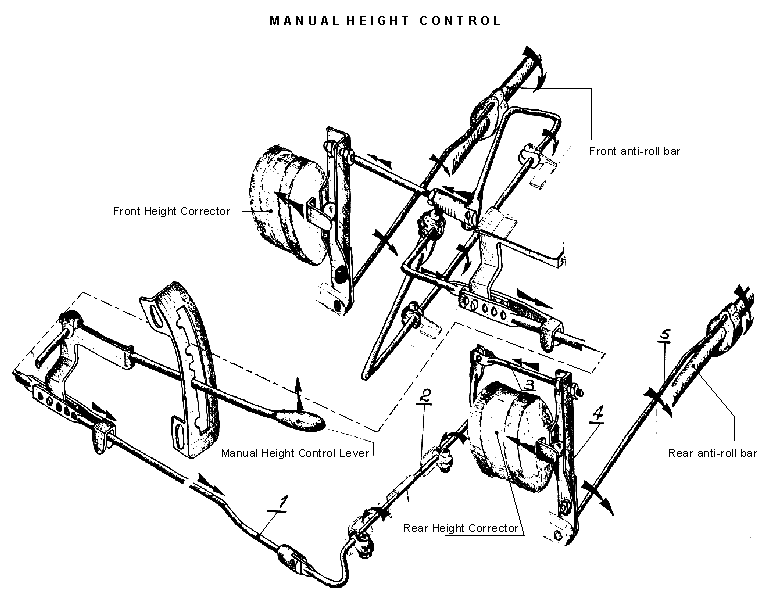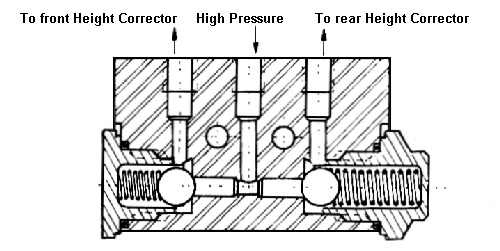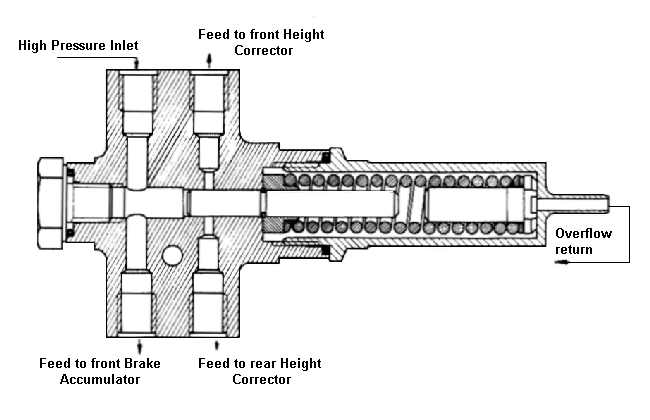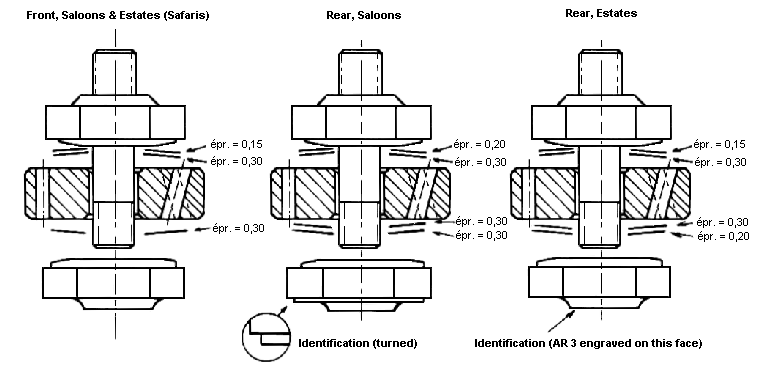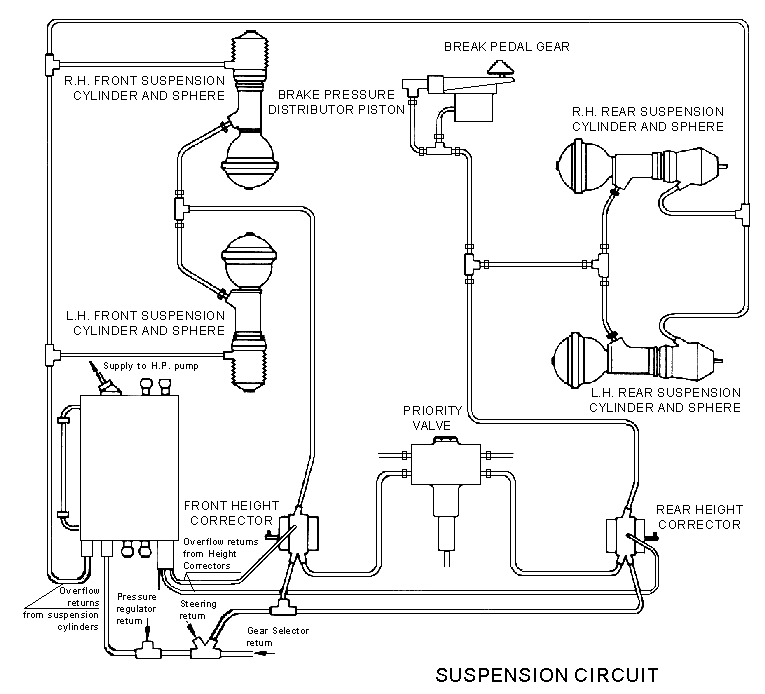| Automatic Height Control :
Let us examine the front control :
The ball end on the Height Corrector slide-valve is acted upon by a
" U "-shaped lever brazed on to a torsion control rod. The
control rod is clamped to the centre of the anti-roll bar.
The anti-roll bar is located by two bushes, the pre-loading of which is
adjustable by means of spacers. Also two clamps are provided to adjust its
end-float.
At the rear the control system is similar, only the anti-roll bar is
different.
Operation of the Controls :
As the anti-roll bar is connected to the suspension arms of both
wheels, any movement of the latter will cause the anti-roll bar to rotate.
When the chassis is at its normal running height, the angular position
of the Height Corrector control rod is adjusted so that it has no effect
at all on the slide-valve of the Height Corrector, thus it remains in its
"cut-off" position.
To understand the working of the Height Correction system, let us take
the simple example of a change in the static load.
An increase in the load causes a movement of the chassis and thus a
rotation of the anti-roll bar. This movement is transmitted to the Height
Corrector control rod which is therefore twisted, and puts a continuous
load on the Height Corrector Control Rod.
The slide-valve is therefore pushed in to the "inlet "
position.
Now the amount of fluid between the diaphragm and the piston is
increased and the chassis rises. This movement reverses the movement of
the anti-roll bar. The load imposed on the slide-valve by the control rod
ceases ant it returns to the "cut-off " position. 'The return to
the "cut-off" position is rapid, because the slide-valve does
not offer any resistance in this direction. The chassis returns to its
normal height again.
If the static load is decreased the operations are similar, but the
directions of movement are reversed.
Let us now take an example of a dynamic change of load.
- The movements only last for a very short period of time, the height
correction system does not operate.
In effect, the time of Height Corrector response makes the Height
Corrector control rod absorb the movements of the anti-roll bar by
virtue of its torsional flexibility.
|
